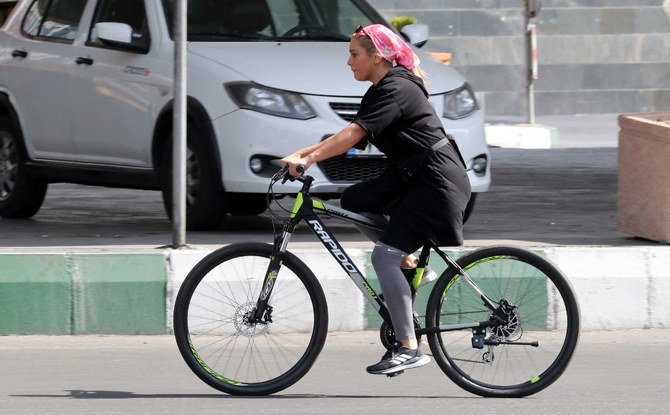Women are leading the battle for Iran’s future

https://arab.news/4duey
As the Iranian regime prepares to confront a host of domestic crises by installing Ebrahim Raisi as president, it finds itself fighting another losing battle, this time against growing resistance at home and a determined opposition force seeking its overthrow.
This seminal battle stands to define Iran’s future, and with it, the fate of the Middle East, which is now threatened by the Tehran regime’s religious extremism as well as by its militia, terror and proxy groups.
Since 2017, the regime has been shocked by at least four major popular uprisings against its shaky extremist rule. In November 2019, Tehran carried out a massacre in the streets, killing at least 1,500 protesters. At the time, authorities, shaken by the protests’ organized nature, blamed the main opposition group Mujahedin-e Khalq for leading the demonstrations.
Supreme Leader Ali Khamenei pointed a finger at the group in one of his speeches, saying: “The protests were prepared months ago. The media of the Mujahedin-e Khalq admitted this. They said, recently, that they were in contact with Americans some months ago, to carry out US orders to organize riots, meet with this or that person, find individuals inside the country to help them fan out to the people. And that it was they who initiated this.”
Khamenei described opposition to his rule as part of a “triangle of enemies” that had planned, financed and carried out the latest uprising.
Alarmed by the protests, Khamenei and his praetorian guard the Islamic Revolutionary Guard Corps apparently decided to consolidate power and prepare to use brute force to crack down on looming rebellion.
As a result, in June, they installed Raisi as president. Raisi — despised in Iran for his involvement in the 1988 massacre of over 30,000 political prisoners, mostly opposition activists — has, in turn, placed ruthless functionaries, corrupt agents and terrorist masterminds in control of various government departments. Meanwhile, the opposition group has responded by increasing and widening the scope of its already extensive campaign inside Iran.
Thousands of resistance units, small teams of activists, continue to carry out acts of defiance against the regime.
Dr. Majid Rafizadeh
Thousands of resistance units, small teams of activists, continue to carry out acts of defiance against the regime in order to encourage popular protests and exhaust the mullahs’ suppressive forces. This week, the MEK celebrated its 57th anniversary in style. Thousands of members held a massive biennial session at its Ashraf-3 camp in Albania, as well as in Berlin, Paris, London and other major cities.
In another sign of its stability and increasing strength, the MEK held internal elections, returning Zahra Merrikhi as secretary general for another two-year term. Unique and unprecedented in the Islamic Republic, women have a leading role in the opposition group. Its central council comprises 1,000 women, a third of whom are former political prisoners who endured unspeakable torture at the hands of the mullahs and IRGC. Many are young rising stars.
The rise of a new generation of activists inside the opposition warrants attention from the media and Iran observers. Many are third-generation, Western-educated cadres eager to transform Iran into a modern country capable of rejoining the international community as a constructive and contributing partner.
Determined and highly capable women in their 30s and 40s are also preparing to take the reins. To many Iranians, fed up with four decades of the medieval, misogynist rule by the mullahs, televised scenes of women taking charge in the opposition movement must be inspirational. In fact, the organization released dozens of videos from women inside Iran who said they were more inspired and prepared to overthrow the regime.
Activists and the Iranian opposition seem more resolute and optimistic about the downfall of the Iranian regime’s theocratic establishment.
The regime’s abysmal mismanagement of economic and social affairs has generated a powerful undercurrent of popular resentment. According to regime statistics, one third of the population now lives in absolute poverty. Opposition tallies indicate that nearly half a million people have died of the coronavirus and only 5 percent of the population has been vaccinated. The economy is on the verge of collapse and the corrupt fundamentalist theocracy has no solutions.
In these circumstances, more Iranians are turning their efforts, struggles and attention to defying the regime and establishing a free, inclusive and democratic government, with women playing a leading role in the future. That prospect will not only transform Iran’s political landscape, but also bodes well for a region threatened by the Tehran regime, and the resurgence of misogynist and fundamentalist forces.
- Dr. Majid Rafizadeh is a Harvard-educated Iranian-American political scientist. Twitter: @Dr_Rafizadeh









































